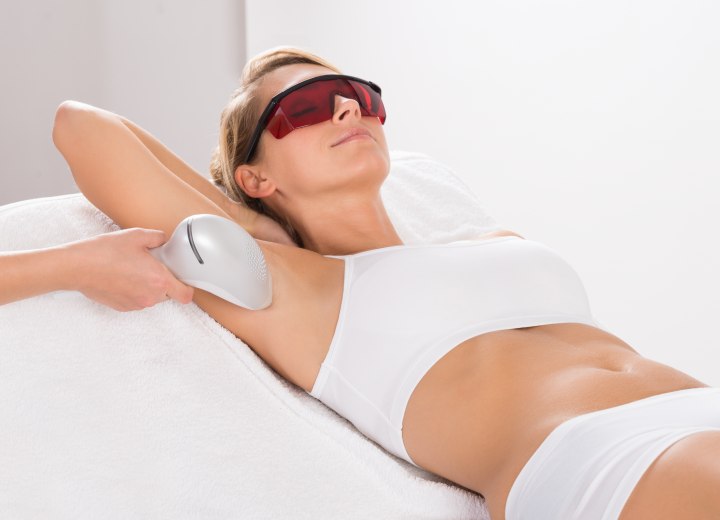Removing Unwanted Hair (2)

Threading: The technique of threading is called Khite in Arabic, and Fatlah in Egyptian and performed by a practitioner who holds one end of a cotton thread in her teeth and the other in her left hand. The middle portion of the thread is looped between the index and middle fingers of the right hand.
The practitioner uses the loop to trap a series of unwanted hair and pull them from the skin. It is relatively inexpensive and the results can last up to four weeks, but it would be hard to find a practitioner outside of a large metropolitan city. It would be good for eyebrows and facial hair, but it can have side effects, including folliculitis, reddening of the skin, and changes in skin pigment.
Permanent Hair Removal:
There are a number of imperfect options for 'permanent' hair removal, some of which are more effective than others. The ability to destroy hair follicles without damaging the surrounding skin tissue is problematic, as reflected by the effectiveness of the available options. Here are some of the more effective methods:
Electrolysis: Electrolysis offers permanent hair removal for most people, but requires a considerable amount of training and skill to be performed correctly. In the process, a hair-thin metal probe is slid into the follicle, and an electrical current is passed through the probe into the follicle causing damage to the follicle and destroying its ability to grow hair. It has the best and longest record of effectiveness, but can be expensive and painful, as well as being very tedious. It should be noted that some people do not respond to electrolysis.
Laser: In the laser method, light at a specific wavelength is directed onto the skin, targeting darkened areas (i.e. the pigment in the hair) and causing thermal or mechanical damage to the follicle. Some consumers have experienced long-lasting or permanent reduction in the amount of hair after treatments. It is considered safe, and is useful for large areas of hair removal.
Some people find it an uncomfortable process, and it is not recommended for those persons who tan themselves or have darker skin pigment. The procedure is expensive, and even the most ideal candidates (with pale skin and dark hair) may not respond to treatment.
Flashlamps: The flashlamp works in principle exactly the same way laser treatments do, except that full-spectrum (non-coherent) light and low-range infrared radiation are filtered to allow only a specific range of wavelengths. Again some people do experience long-lasting or permanent hair removal. It has the same drawbacks as those listed for laser treatment.
Prescription Oral Medications: There are available some prescription oral medications that can stop unwanted hair growth on the body, such as spironolactone, finasteride, flutamide, cyproterone acetate, ketoconazole, and gonadotrophin releasing hormone agonists. All of these medications act to correct specific causes of abnormal hair growth and are not intended to general use or simple cosmetic hair removal.
They can only be prescribed by a physician and should only be taken under specific instruction. Some of the medications can have very serious side effects. Once again, these drugs are designed to treat medically established cases of abnormal hair growth, NOT to remove hair for cosmetic or vanity purposes.
Topical Prescriptions: In cases of women with abnormal facial hair growth, a doctor can prescribe a topical treatment called Vaniqa, which contains eflornithine hydrochloride. Eflornithine hydrochloride inhibits the enzyme, ornithine decarboxylase, which affects hair growth. Current studies show it is effective in about 58% of women who've used it. It is not a depilatory, so you would need to continue using another method of hair removal in conjunction with the topical medication.
Results usually take about 2 months to become noticeable, and if you discontinue the treatment, the hair may return to previous levels within 2 months as well. It is necessary to consult carefully with your doctor on the proper use of this treatment.
©Hairfinder.com